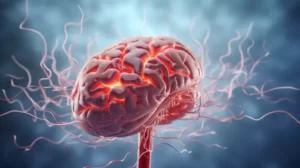Your brain is one of your most important assets, and as you age, you may find your cognitive abilities beginning to slow. There is a daily, proven method to protect your brain cells — exercise. Even if research had not shown that exercise is good for brain cells, many people would still do it. Exercising, such as going for a relaxing three-mile jog, can make your day feel complete.
The Exercise Experience
Many proponents of the paleo lifestyle believe that more intensive exercise, like sprinting or indulging in CrossFit, are more suitable for building fitness. But while slow running may not be everybody’s ideal exercise, it seems to help keep your weight down and your cognitive powers up.
Researchers have reviewed studies of the effects of exercise on older people with dementia, and they found good evidence that it improves their cognitive functioning and boosts their ability to carry out daily activities that had been severely impaired. Though the findings should still be taken with caution, there is “promising evidence” that exercise programs can improve cognition and daily functioning in older adults.
Brain Chemicals
Researchers have discovered that exercise stimulates the production of a natural chemical that protects the well-being of neurons in the brain. This neuro-protective substance, called irisin, is produced in the brain when you perform endurance exercises like running or biking. Scientists have found that when irisin levels in the blood increase, they activate genes involved in learning and memory. Lab experiments at Harvard Medical School and the Dana-Farber Cancer Institute show that exercise increases a molecule called FNDC5 and its by-product, irisin, which in turn boost the expression of BDNF (brain-derived neurotrophic factor), a growth factor that helps maintain the brain’s neural network.
Researchers are attempting to develop a pharmaceutical form of irisin that could be marketed by a drug company. However, there’s no need to wait for that long drug-development process to take place. Every time you put on your running shoes and head for the jogging trail, you’re making your irisin.
Eye Health
Aside from the brain problems that affect many older people, vision difficulties can also impede a happy and fulfilling life. Exercise can aid this aspect of your body as well. A study at Emory University showed that moderate aerobic exercise helps preserve the structure and function of nerve cells in the retina, even after these cells have been damaged. Researchers believe their findings show that exercise may slow the progression of retinal degenerative diseases, which are a leading cause of blindness in older people.
Age-related macular degeneration is one of the primary causes of blindness in the elderly. It occurs when light-sensing nerve cells in the retina, called photoreceptors, die. Exercise may help keep them alive. Like the benefits that occur in the brain, exercise assists the eye by stimulating the production of BDNF.
These findings further our current understanding of the neuroprotective effects of aerobic exercise and the role of BDNF. People who are at risk of macular degeneration or have early signs of the disease may be able to slow the progression of visual impairment through exercise.
You may find that you crave exercise, so you don’t need research studies to motivate you to run every day and lift weights a few times a week. Regardless, it is comforting to know that science is catching up to the benefits that exercise can provide for your body and mind.



